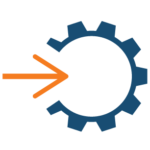Overview:
Through hands-on exercises, this course teaches you from the ground up. You will learn to model, build and test message flow applications, connect to IBM MQ, process file-based data, solve problems, transport, transform, route and enrich data, process messages and create Web services by harnessing capabilities of the product.
Audience:
This course is designed for software developers who will use IBM Integration Bus to implement flow of business information between dissimilar applications running on disparate hardware and software platforms.
- Working knowledge of Java, Extensible Markup Language (XML) and XML Path language (XPath).
- Understanding of protocols for transferring data between client and server such as HTTP, HTTPS, FTP and FTPS is required.
- Familiarity with network message-oriented middleware IBM MQ is
desirable. - Knowing fundamentals of asynchronous messaging technology JMS (Java Message Service) API will be helpful.
Objectives
After completing this course, you should be able to
- model, develop, deploy and test message flow applications
- configure connections to IBM MQ
- construct message flow applications from predefined models
- define, test and implement XML and Data Format Description Language (DFDL) data models
- leverage power of IBM Integration Bus processing nodes
- make suitable use of transport protocols and call them inside message flows
- identify and resolve development and runtime errors
- write Java language and Extended Structured Query Language programs to transform data
Course Topics
Day 1
- Course introduction
- Unit 1. Introduction to IBM Integration Bus
- Unit 2. Application development fundamentals
- Exercise 1. Importing and testing a message flow
- Unit 3. Creating message flow applications
- Exercise 2. Creating a message flow application
Day 2
- Unit 4. Connecting to IBM MQ
- Exercise 3. Connecting to IBM MQ
- Unit 5. Controlling the flow of messages
- Exercise 4. Adding flow control to a message flow application
- Unit 6. Modelling the data
Day 3
- Exercise 5. Creating a DFDL model
- Unit 7. Processing file data
- Exercise 6. Processing file data
- Unit 8. Using problem determination tools and help resources
- Exercise 7. Using problem determination tools
Day 4
- Exercise 8. Implementing explicit error handling
- Unit 9. Mapping messages with the Graphical Data Mapping editor
- Unit 10. Referencing a database in a message flow application
- Exercise 9. Referencing a database in a map
- Unit 11. Using Compute nodes to transform messages
Day 5
- Exercise 10. Transforming data by using the Compute and Java Compute nodes
- Unit 12. Processing JMS, HTTP, and Web service messages
- Unit 13. Preparing for production
- Exercise 11. Creating a runtime-aware message flow
- Exercise 12. Creating a SOAP Service and a REST Service
- Unit 14. Course summary
- Useful Links
- How to get help
- Key learnings and planning how participants can use the learnings

